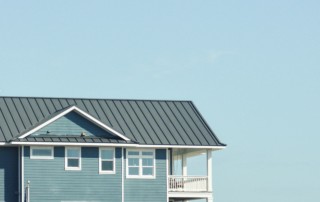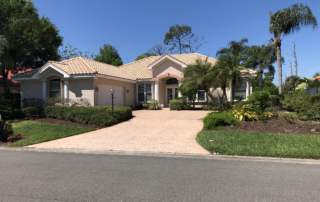Hurricane season has just begun. Throughout Venice, Englewood and North Port, residents are preparing for the possibility of a big storm. Whether stocking up on water, buying hurricane shutters, or mapping out an evacuation route, those of us who live in South Florida know that it is best to be ready for anything.
But even if we never see a named storm – like 2017’s Hurricane Irma or 2018’s Hurricane Michael – we also know on any given day, a severe thunderstorm could brew up without warning, causing wind damage to our homes and property. This is why it is so important to understand how the wind may affect your roof, and how to best prepare for any eventuality.
How Damage Can Occur
We sometimes experience severe winds in this area, even without a hurricane or tropical storm. Even if your roof has no prior damage, it may be susceptible to damage if the storm is strong enough. Your best defense is to have a quality, properly installed roof which has been recently inspected for any defects or material issues. While any roof can sustain wind damage, it is far less likely to if the roof is structurally sound and secure before the storm hits.
There are various ways that a storm can cause wind damage.
- Flying Debris: Although any roof can be damaged by flying debris, a tile roof can be easily cracked if hit hard enough with a projectile. Broken tree limbs can also be dragged across an asphalt shingle roof, causing damage to the roofing material. In recent storms, people have found some crazy items on their roof – from patio umbrellas to street signs. This debris – propelled on a 60 mph gust – can do serious damage to your roof, the materials or even the structure.
- Shingles or Tiles Torn Off: Strong wind will be able to get up and under virtually any small gap or space in your roofing material. Once one tile or shingle has been blown off the wind has a greater surface (and therefore greater opportunity) to penetrate, and an entire area of your roof may be affected.
- Water Intrusion: Once there are missing or broken tiles on the roof, your topmost protective layer is breached. The wind will drive rain into any small crack or crevice now exposed, and you may now experience roof leaks. Although the roof is structured to have water run down into the gutters, gale force winds will often force water sideways, or even up a slope, saturating your materials and underlayment.
- Gutter Systems: Depending on the direction the wind is blowing, any surface is liable to catch a gust and sustain damage. Making sure that your gutters are properly fastened, as well as clear of debris in order to funnel the rainwater as designed, will help to ensure that you find everything secure once the storm has passed.
Preventing Wind Damage
Unfortunately, there is no way which completely protects you from sustaining wind damage to your home. However, by having your roof inspected and all minor issues repaired before the big storm hits, you will increase your chances of surviving unscathed.
Here’s a Hint: During the stormy summer months, be sure to keep tree branches trimmed, and remove all limbs which look dead or dying. Also, be sure to secure loose items even if you think they won’t fly – a strong tropical storm gust is capable of lifting up chairs and pots.
After every major storm, do a quick visual check of your gutters and soffits, as well as your roof. (It is best not to climb on the roof unless you are experienced – simply eyeball from a ladder and look for areas of damage.) If you see anything of concern or notice roof damage, call Kingdom Roofing right away. Don’t wait until the next storm, when wind damage may be increased.




